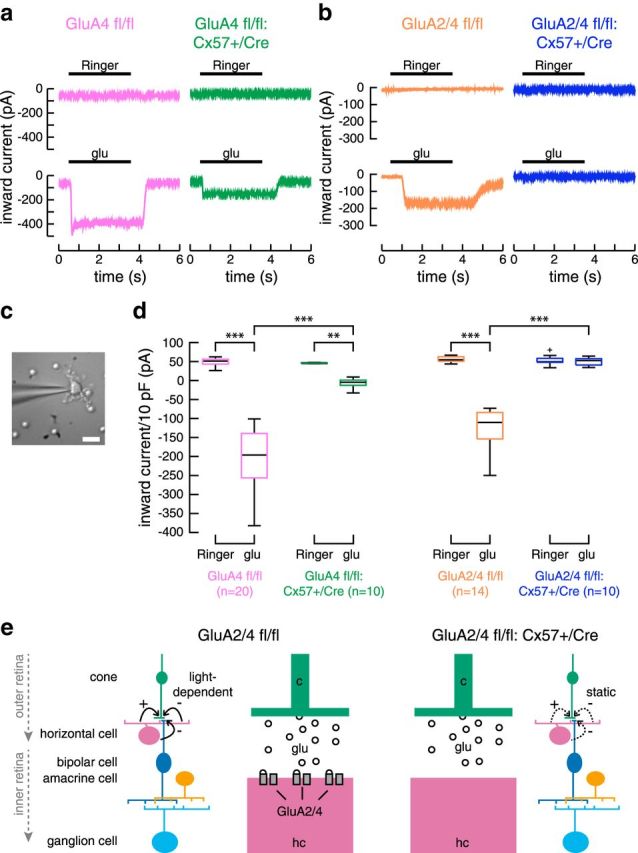Figure 3.

Targeted deletion of GluA2 and GluA4 in horizontal cells completely eliminated glutamate-induced inward currents. a, When only GluA4 was deleted from horizontal cells, glutamate-induced currents were reduced but not abolished. Example traces for application of Ringer's solution and 1 mm glutamate (glu). Data replotted after Ströh et al., 2013. b, Deletion of both, GluA2 and GluA4, from horizontal cells eliminated glutamate-induced currents. Representative recordings with application of Ringer's solution and 1 mm glutamate. c, Dissociated horizontal cell with its typical morphology, targeted with a patch electrode. Scale bar, 10 μm. d, Boxplots of inward currents for control and GluA-deficient mice. Currents were normalized to 10 pF of membrane capacitance to account for differences in cell size. The cross represents an outlier. Differences between genotypes were significant (glu application, GluA2/4 fl/fl vs +/Cre: Wilcoxon rank sum test, p = 4.7 × 10−5). No difference was found between the application of Ringer's solution and 1 mm glutamate for GluA2/4-deficient mice (+/Cre, Ringer's vs glu: Wilcoxon sign rank test, p = 0.847). **p < 0.01; ***p < 0.001. e, Simplified diagram of the mammalian retina, showing the rationale of this study. Glutamate receptors are deleted from horizontal cells to deprive them from photoreceptor inputs. Please note that the strength of horizontal cell feedback (solid black arrows) is dependent on light intensity. Thus, depriving horizontal cells from photoreceptor inputs likely does not abolish feedback but eliminates its light-dependent modulation, leading to static feedback in GluA2/4-deficient mice (dashed black arrows).
